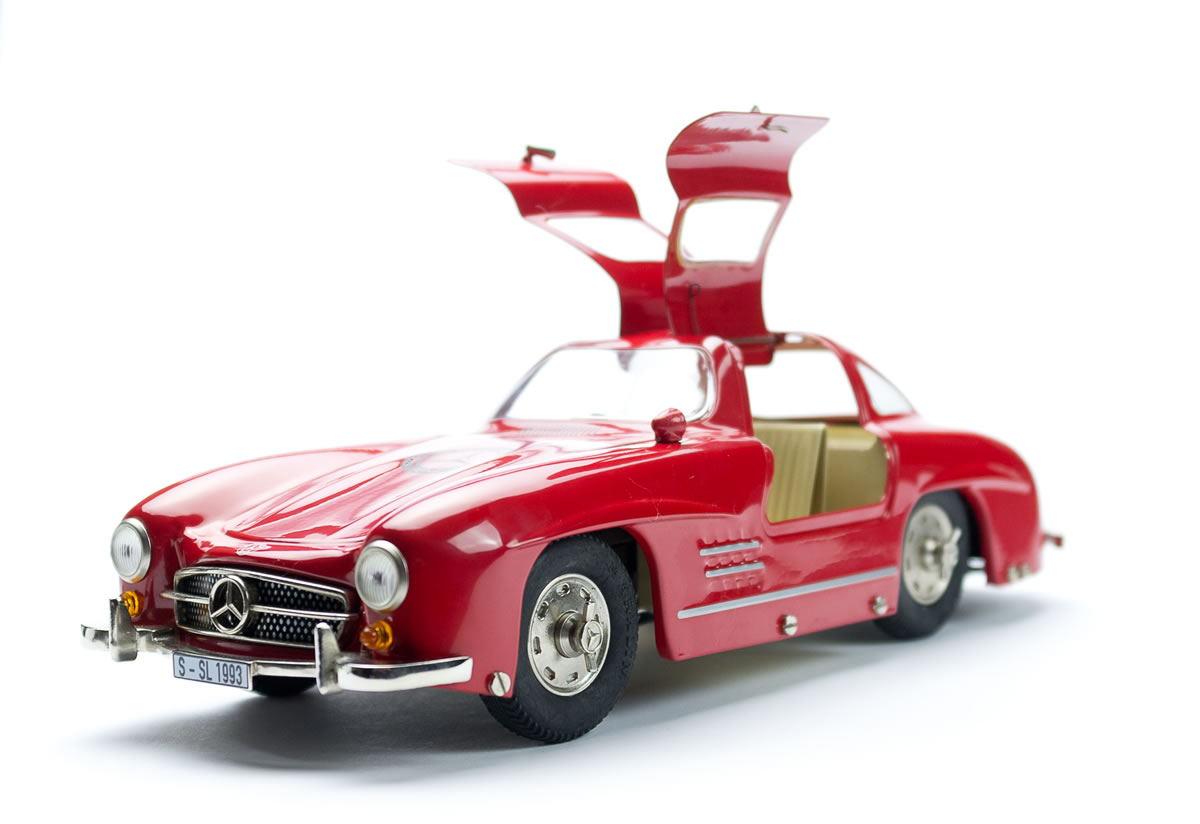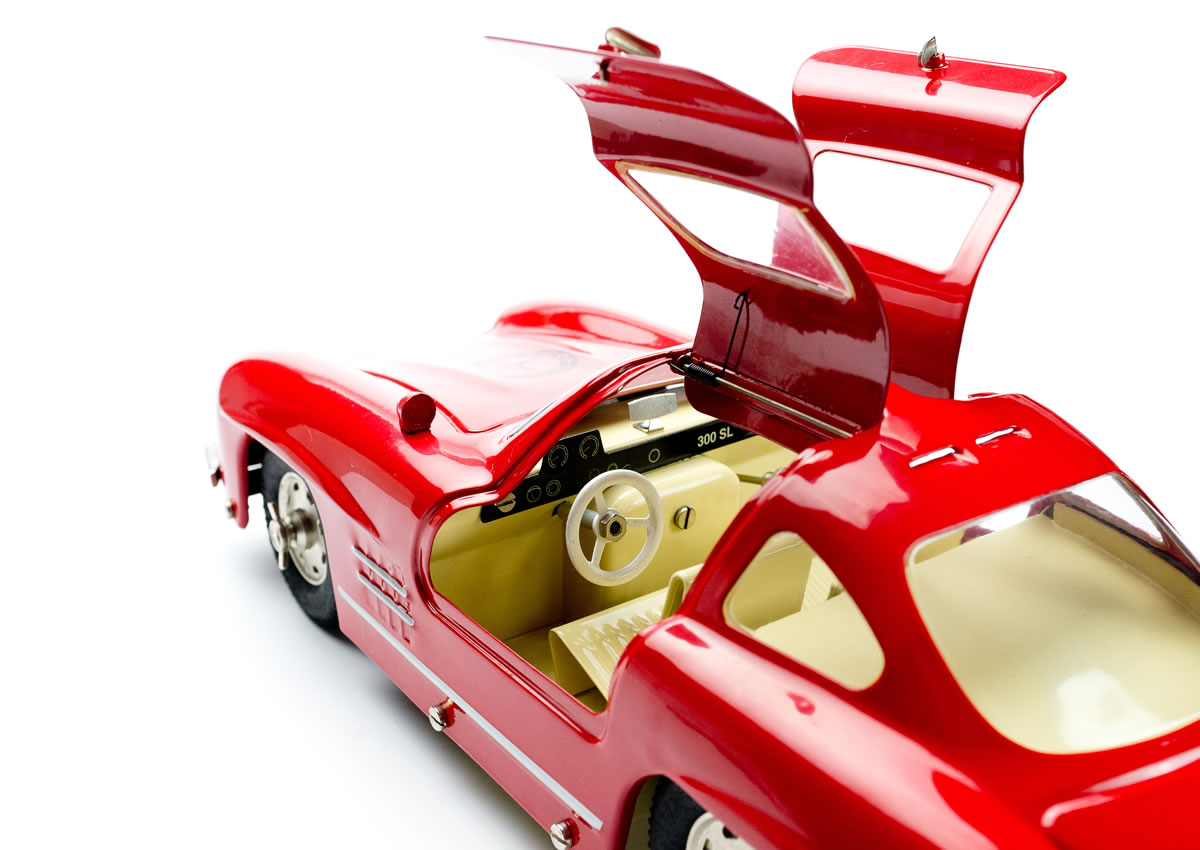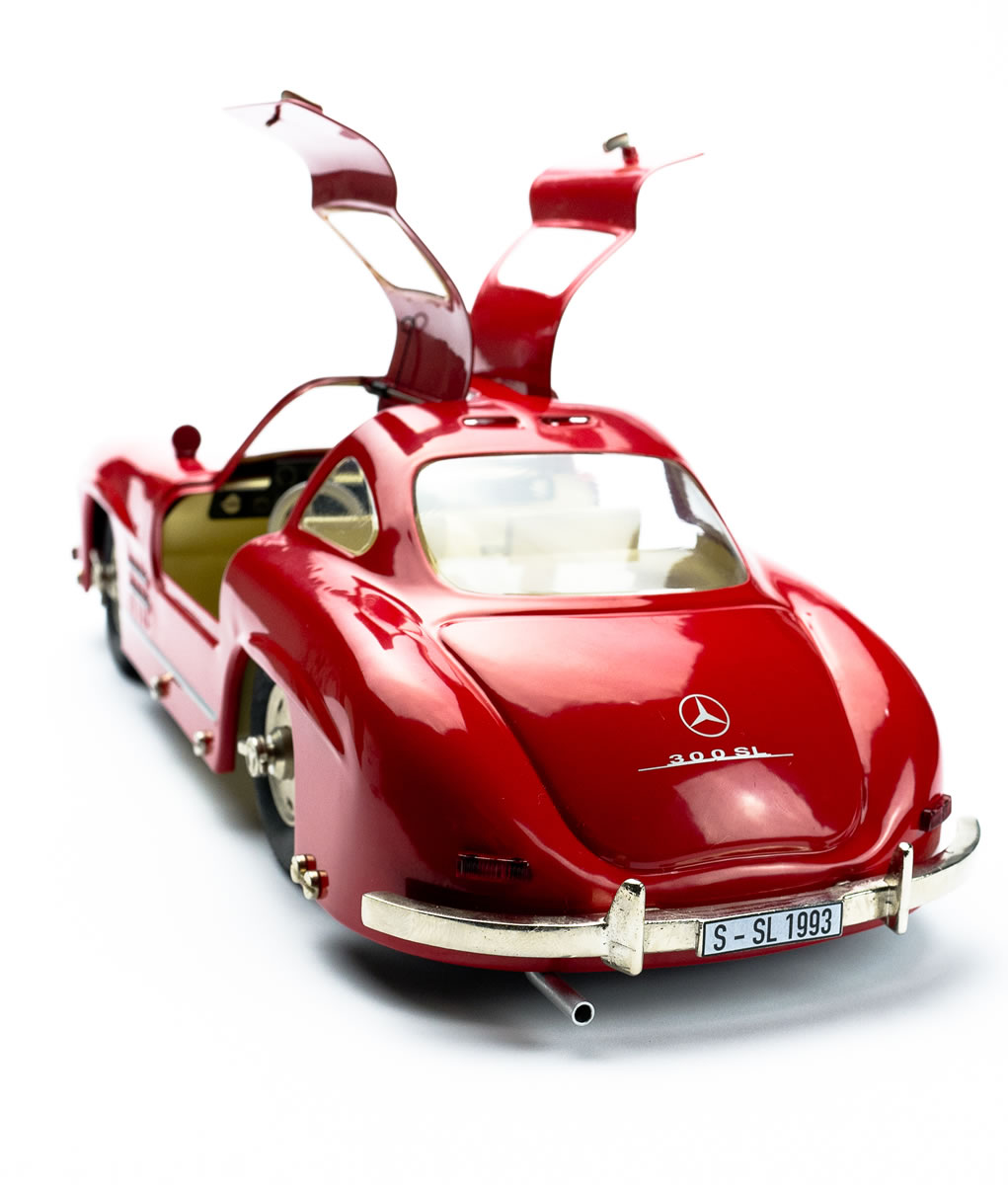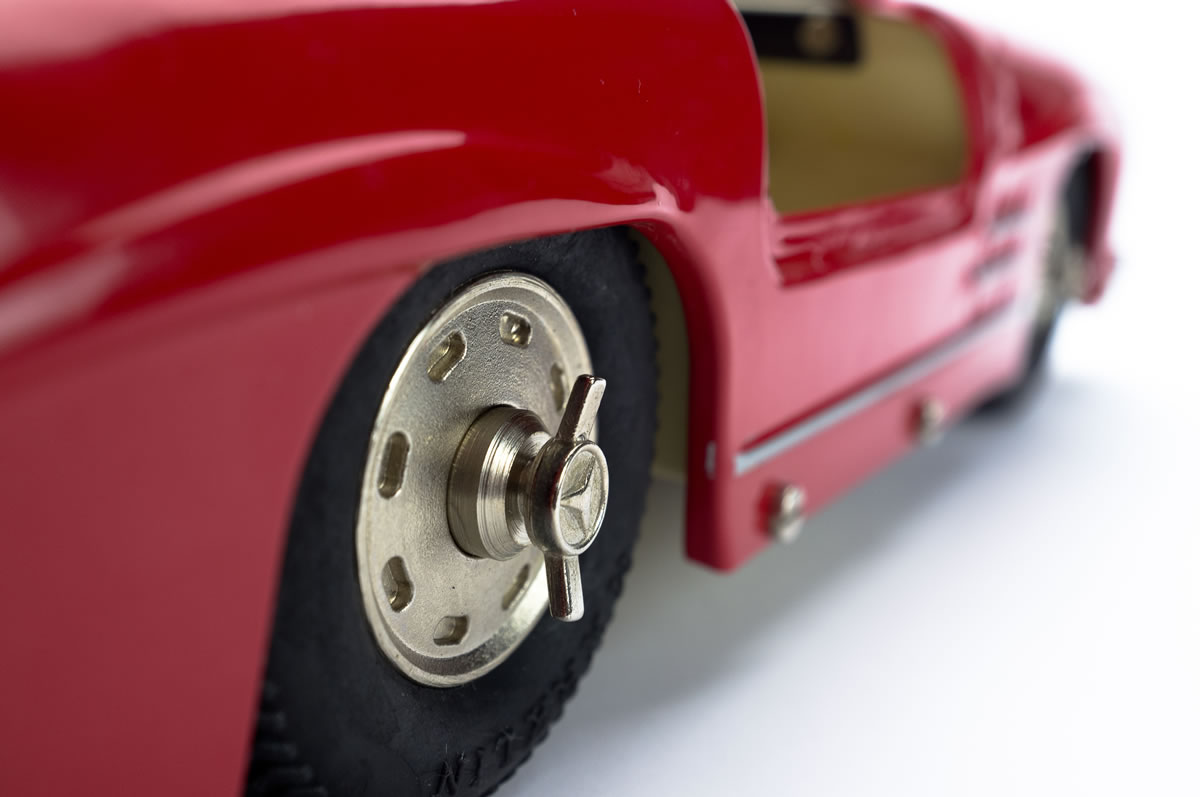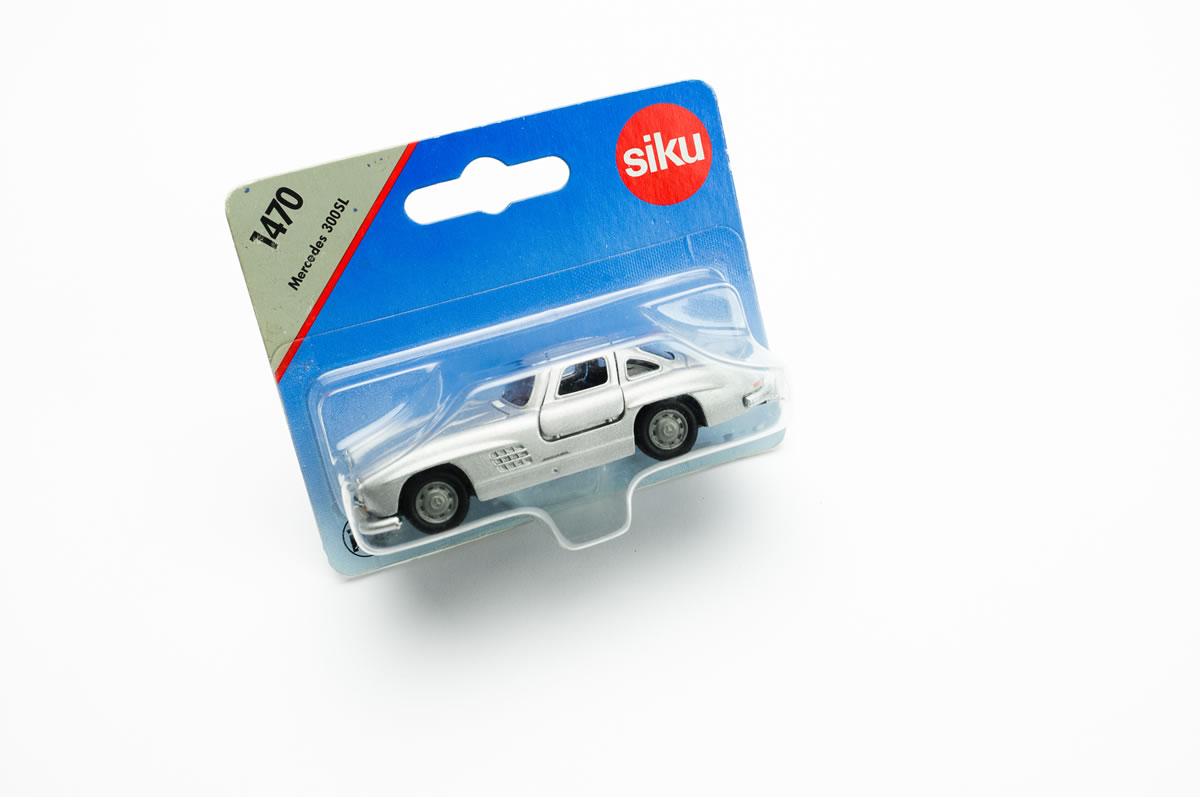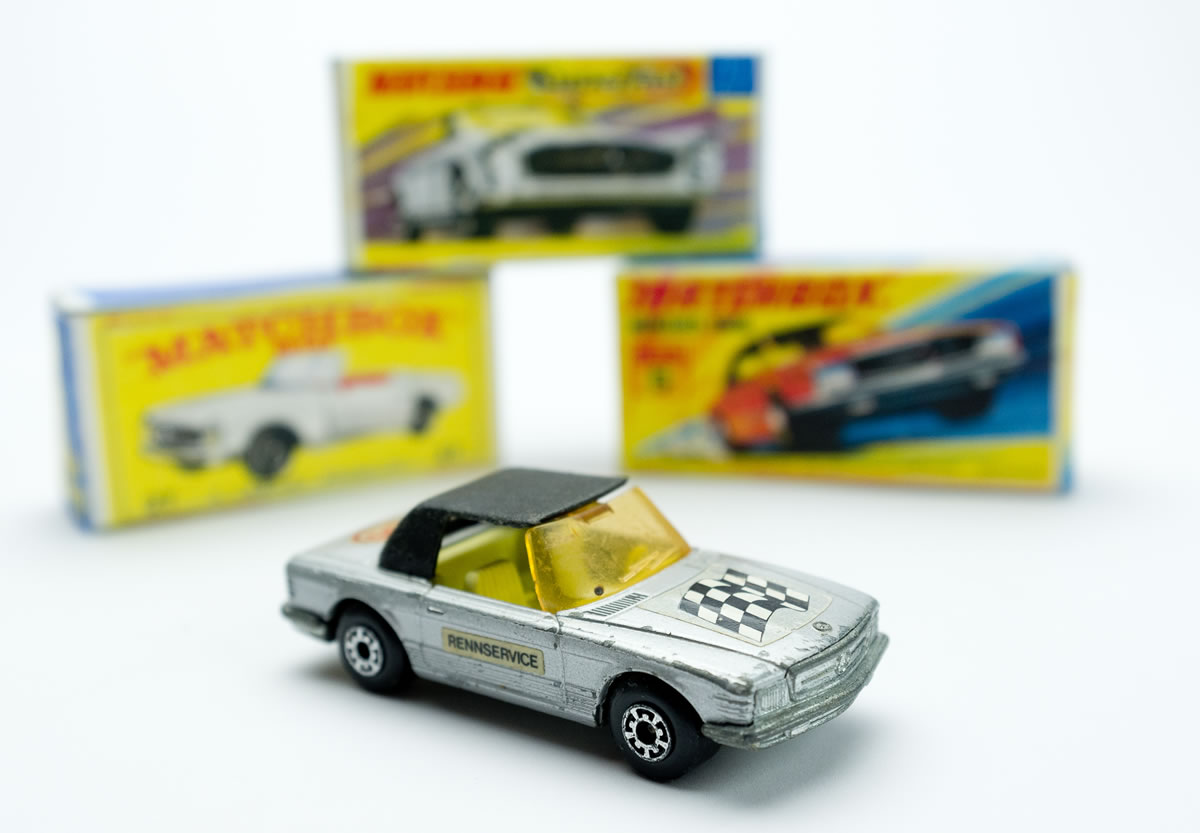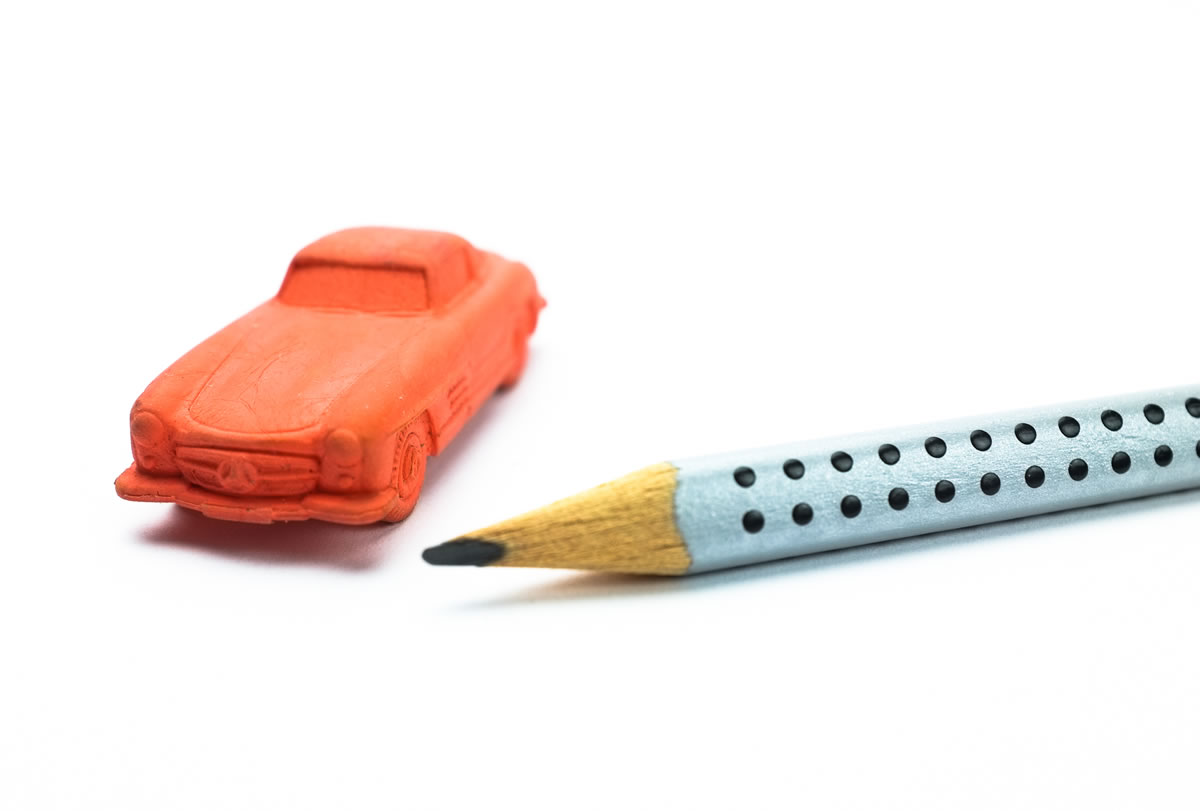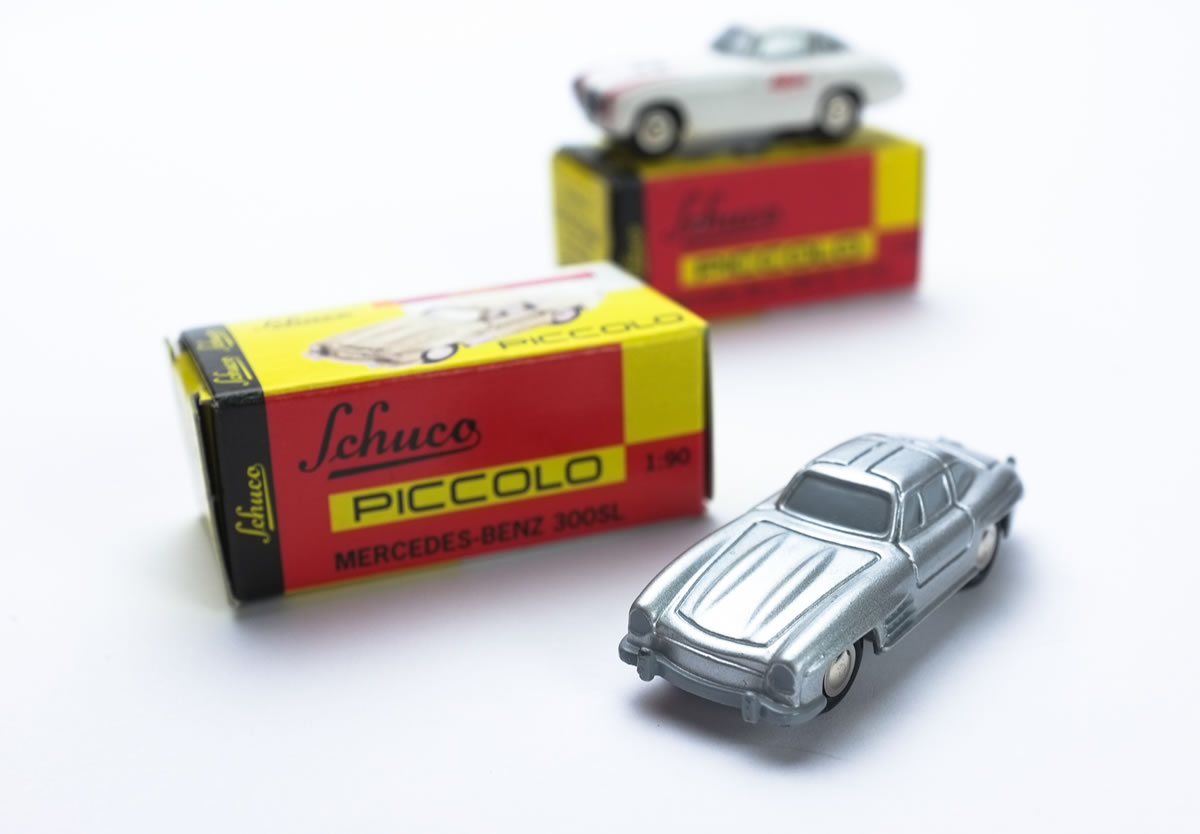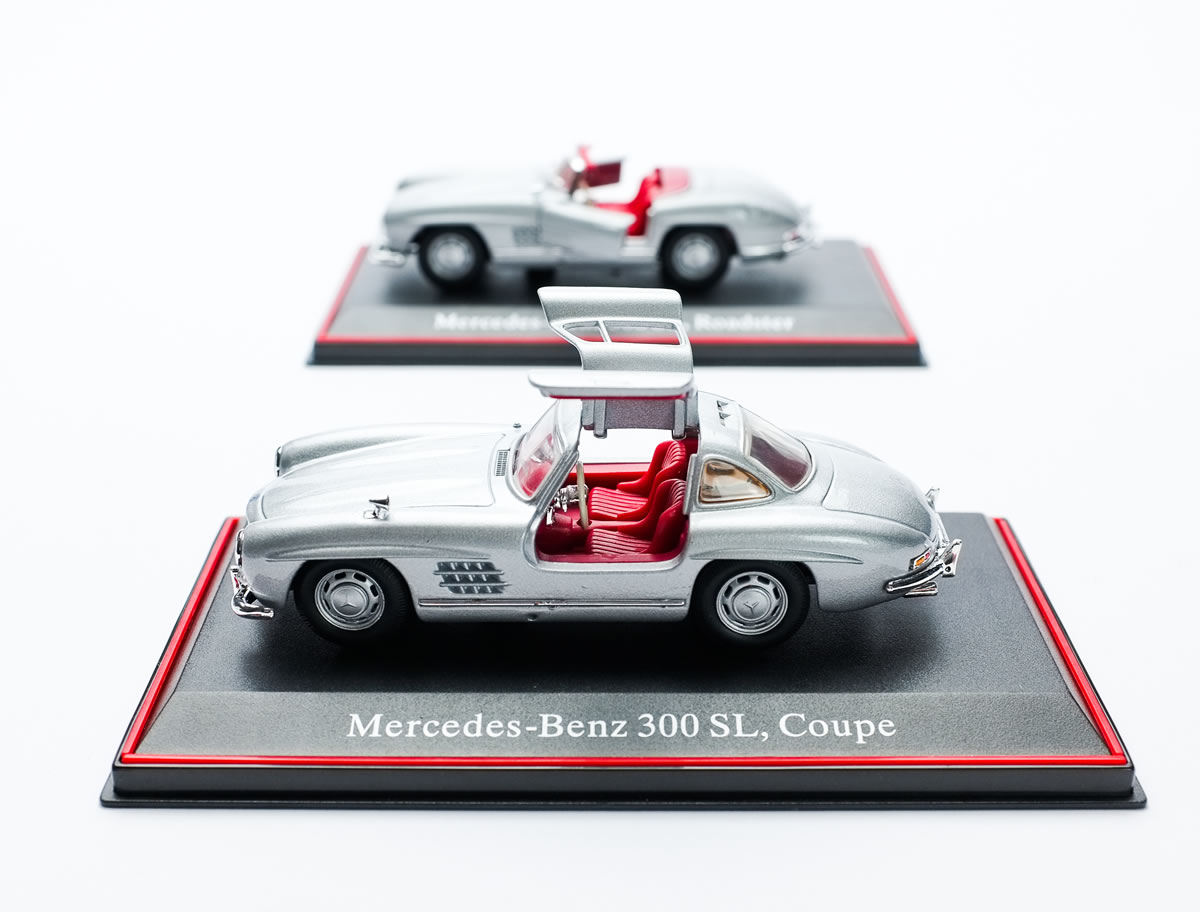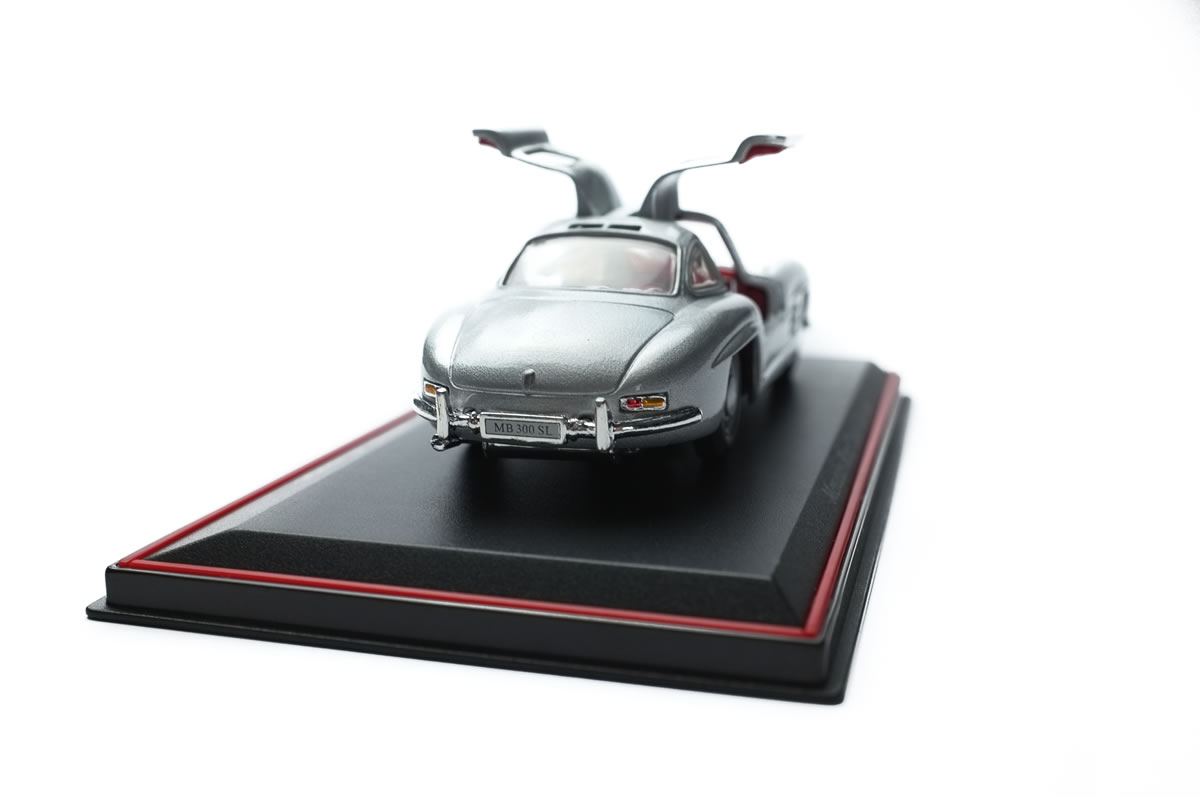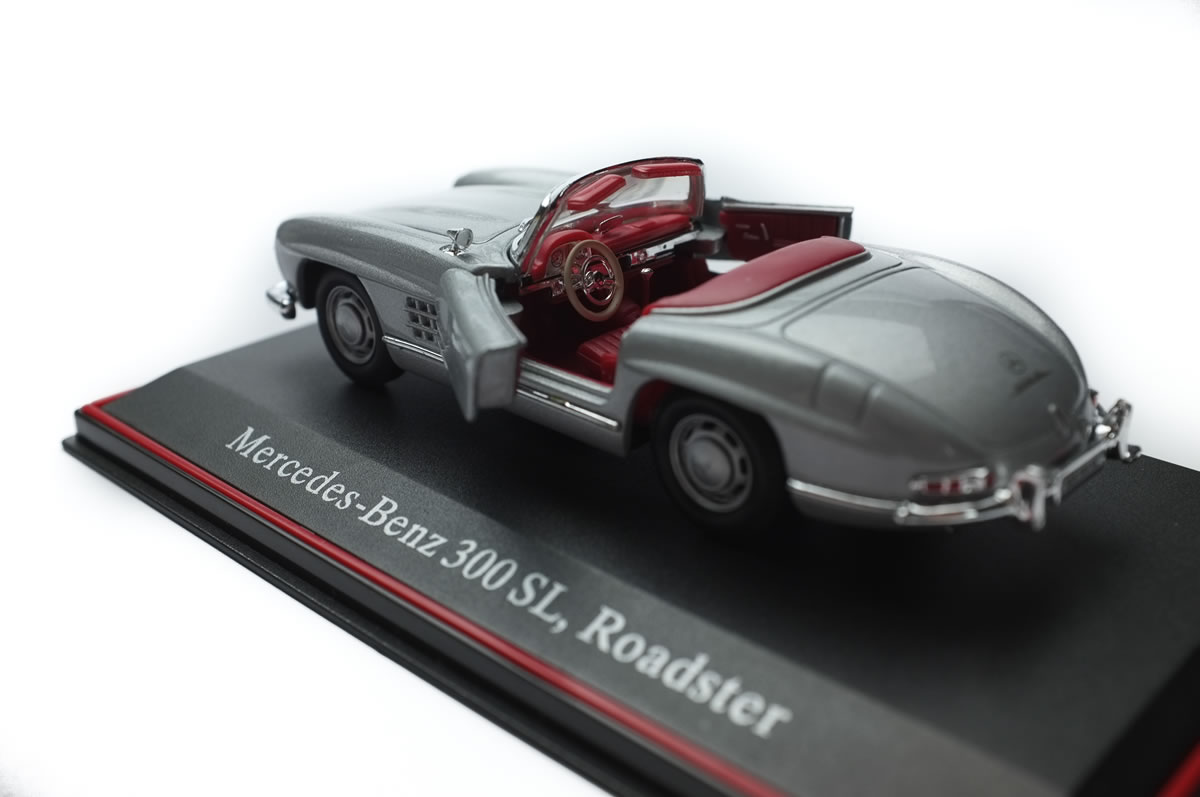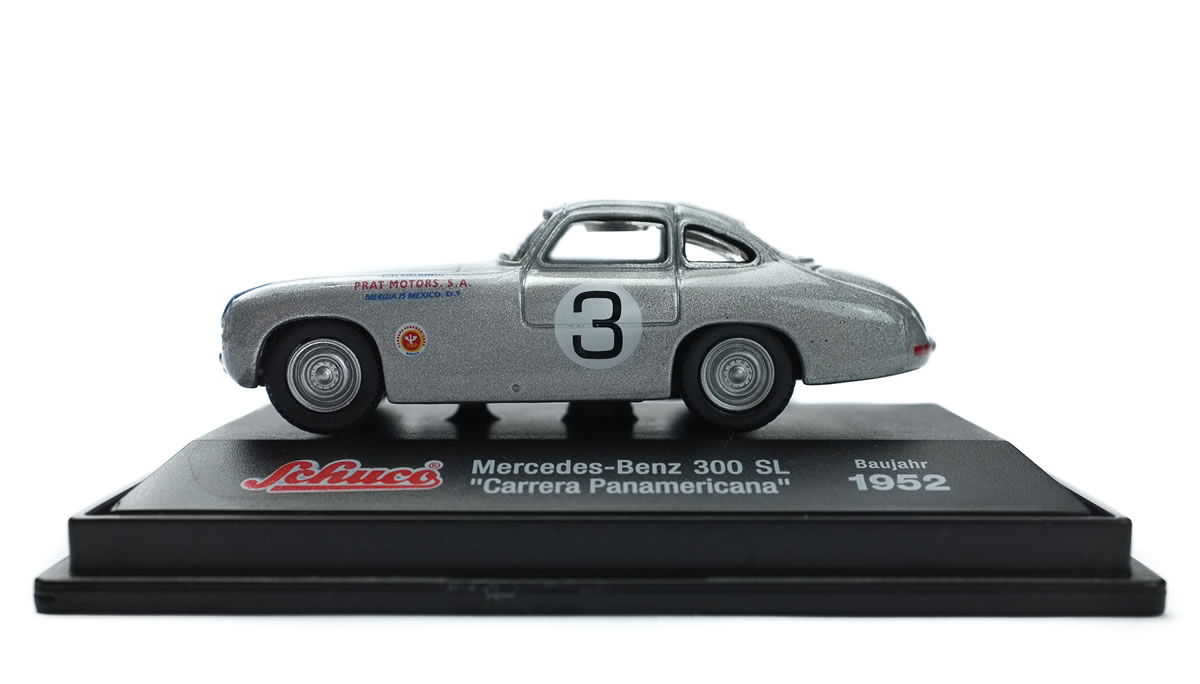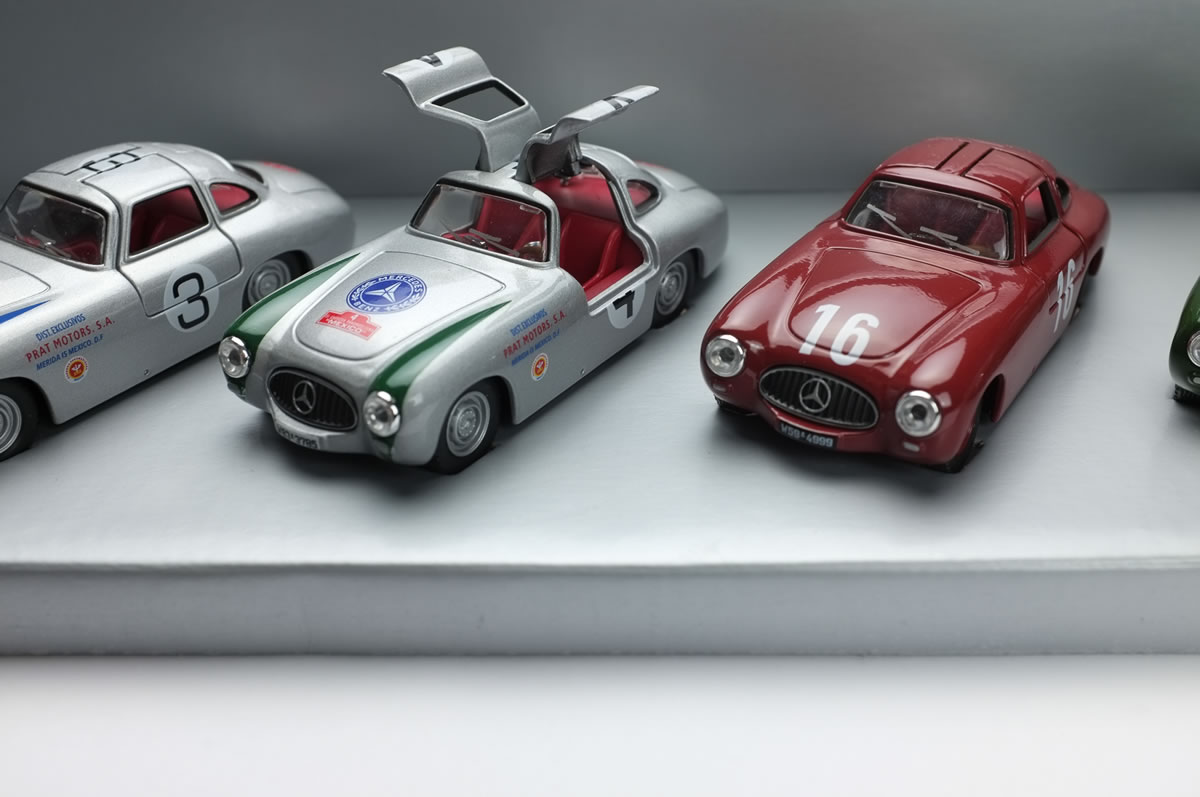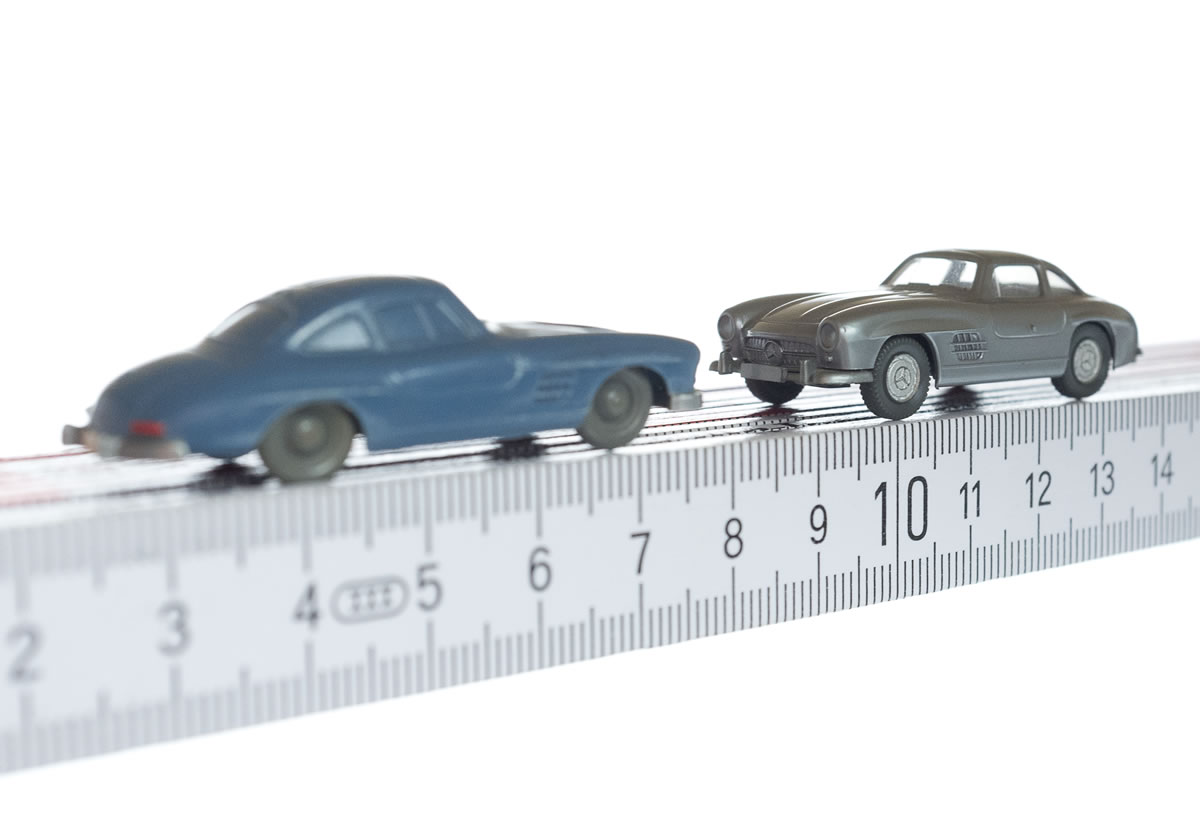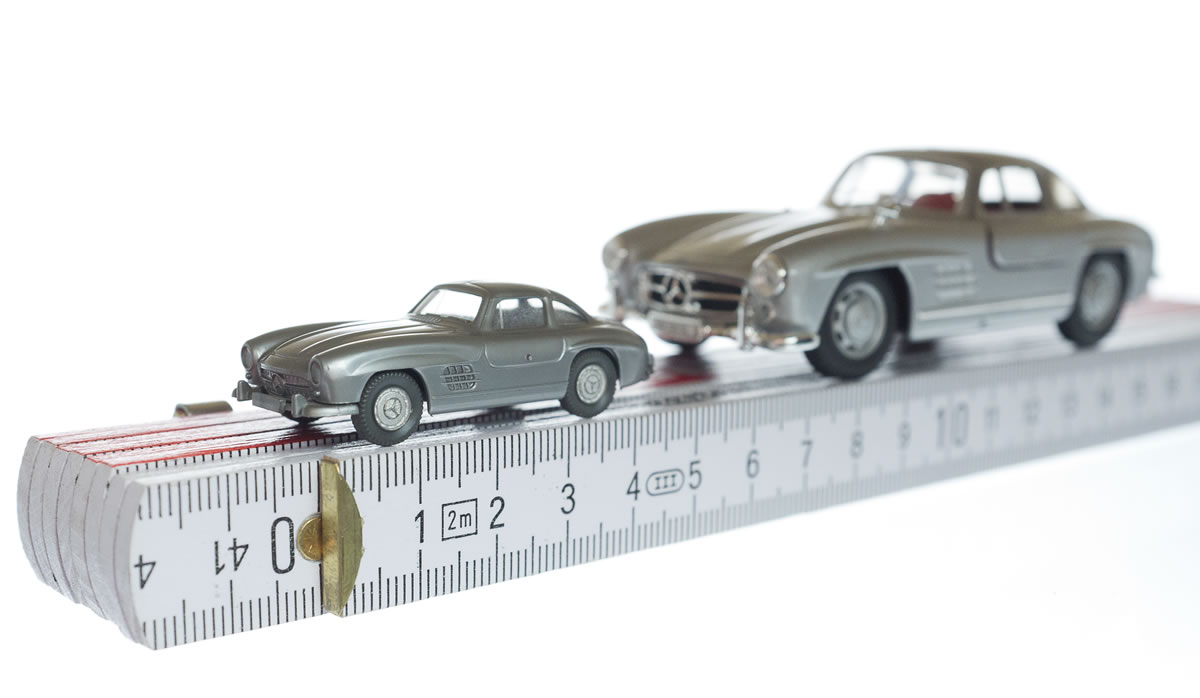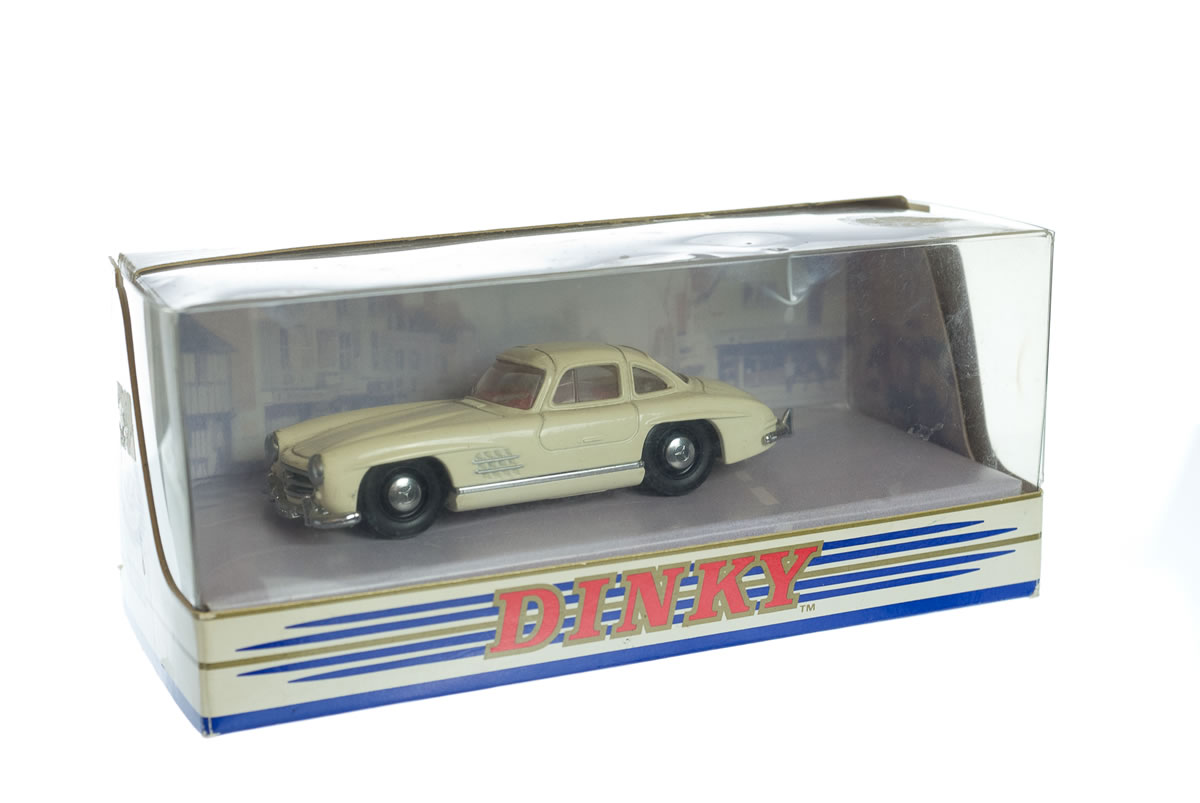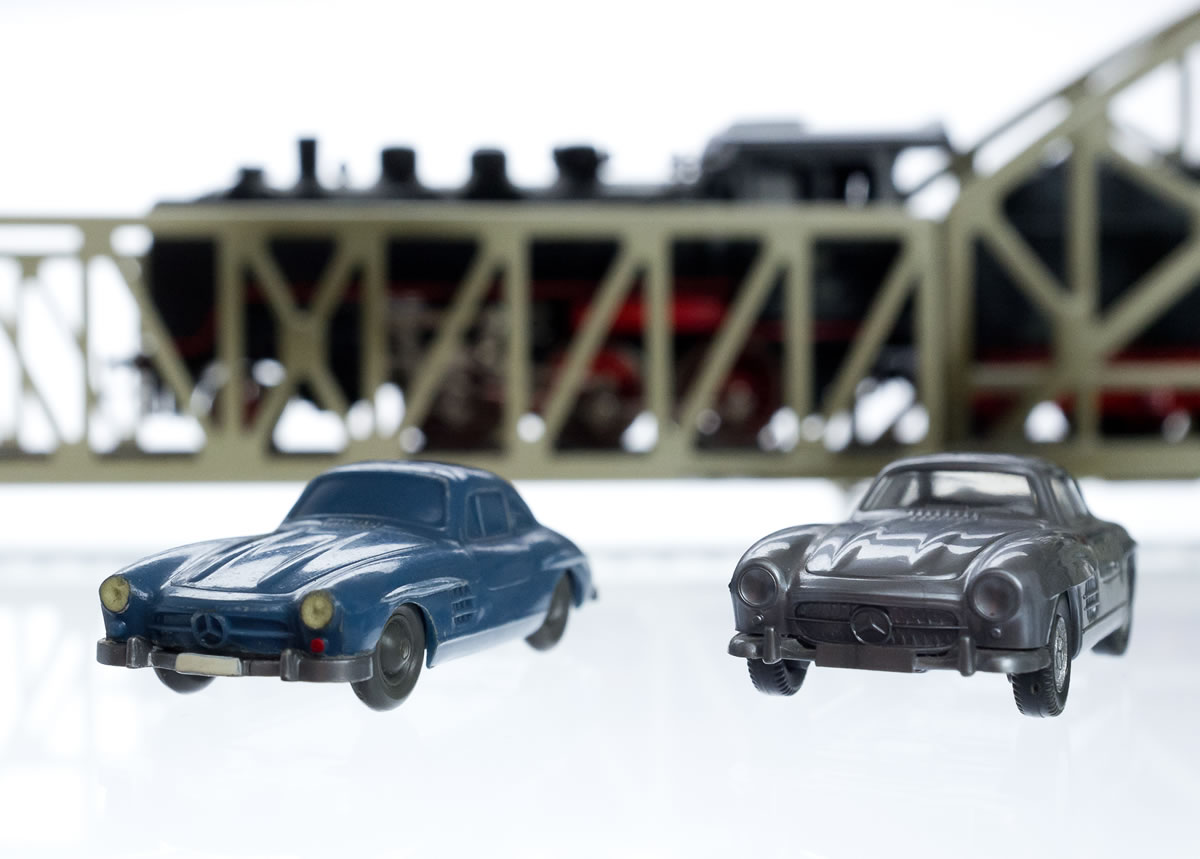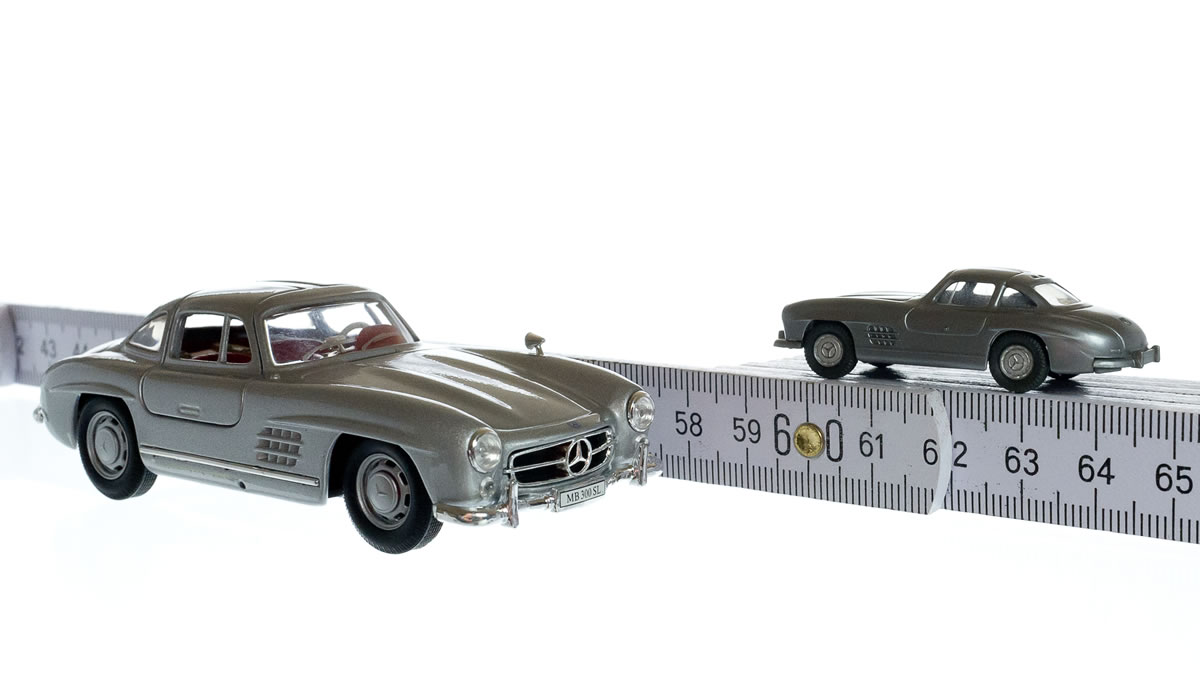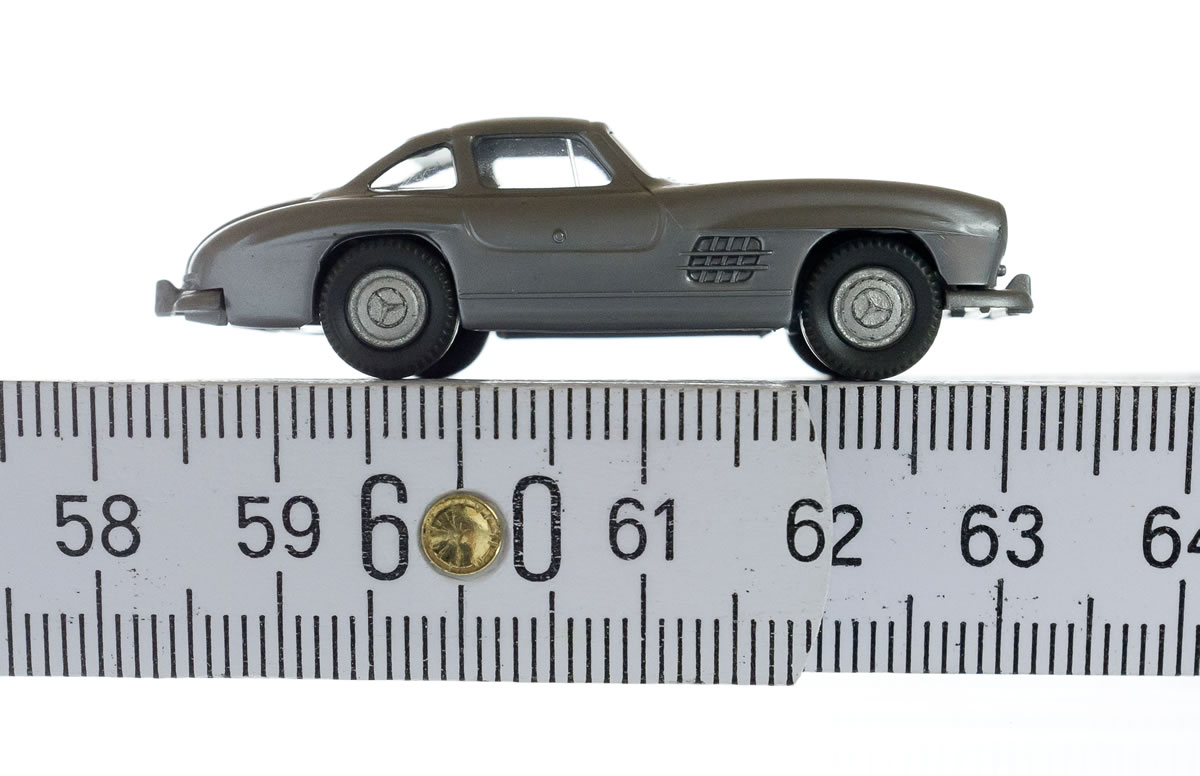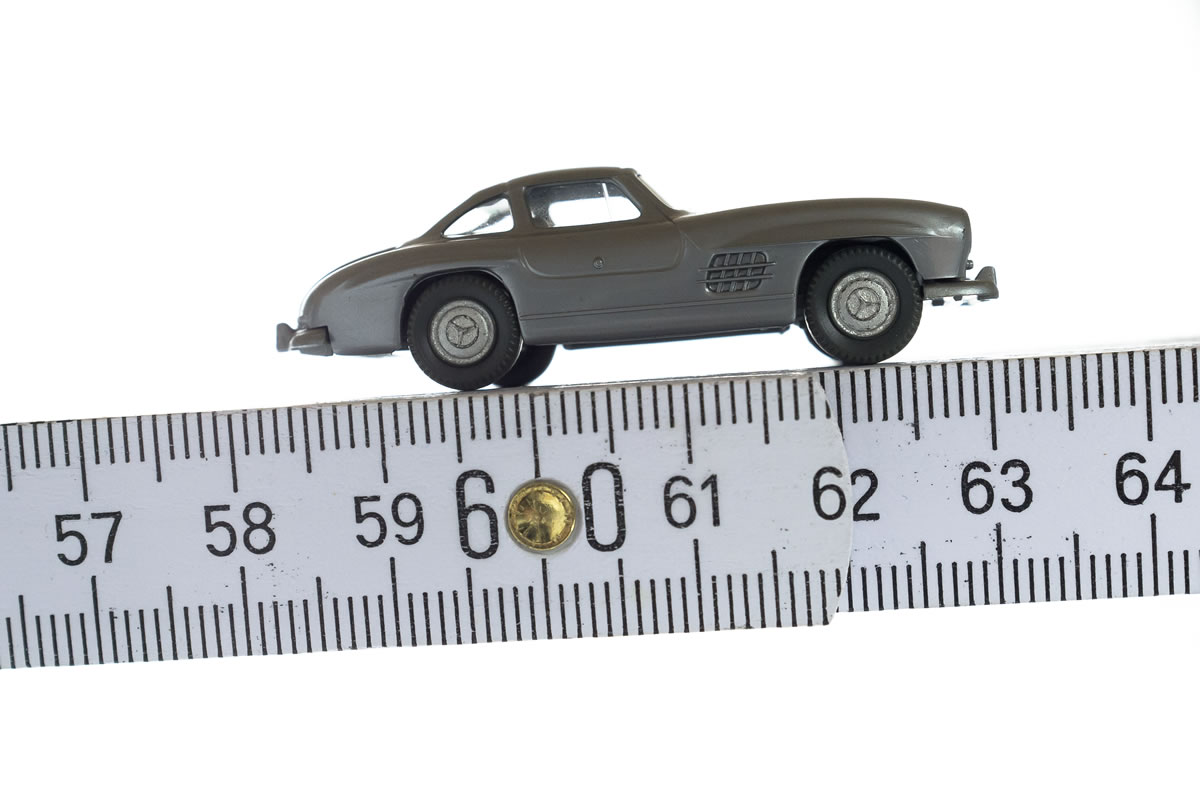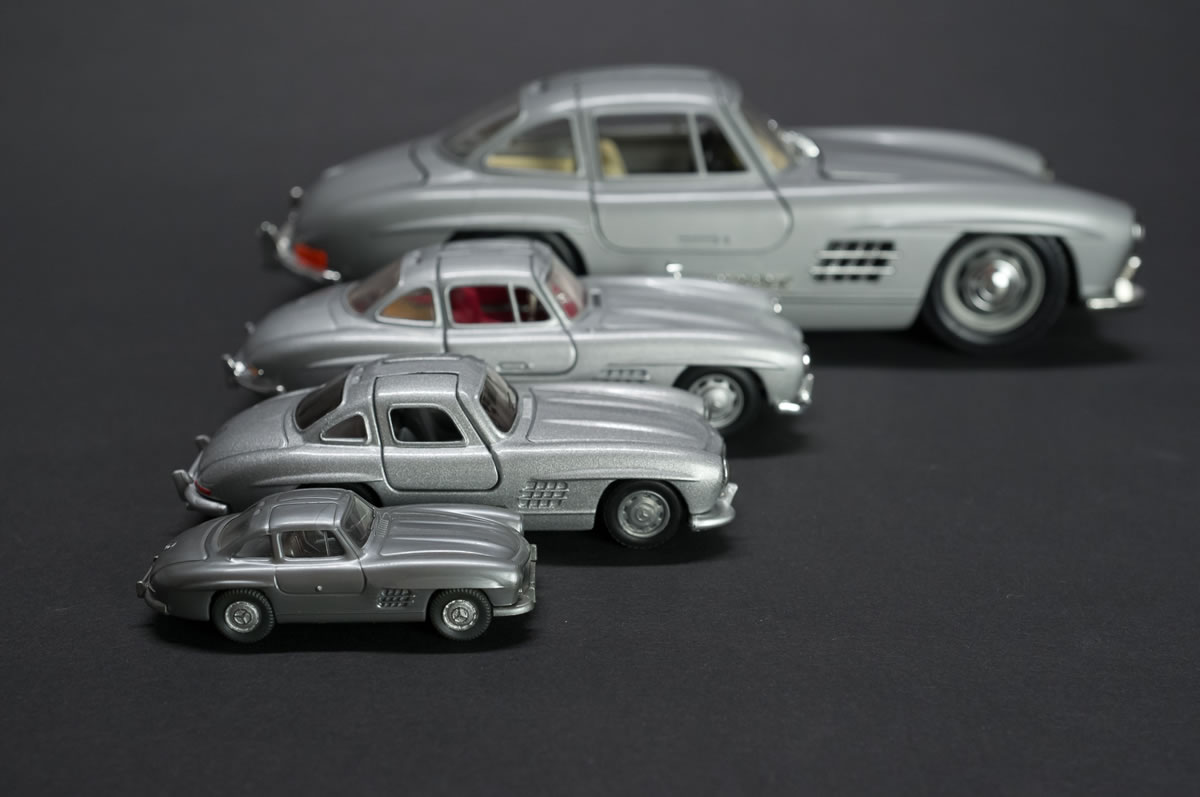The Mercedes-Benz 300 SL racing car, first produced in 1953 as a tiny model, is a mere twelve centimetres long (4.7 inches). Even at such a small size, for th artists, it is more than enough space to recreate a detailed copy of the legendary racer. The Dux brand toy car, manufactured by Markes and Co. in Lüdenscheid, marked the beginning of a great and fascinating tradition. The history of toy and model cars based on various incarnations of the Mercedes-Benz SL sports car is almost as long as that of the SL class itself.
This link between real-life cars and their model versions is a constant factor in the history of the automobile. From race cars and sports cars to saloons and even heavy trucks, the toys and models represent vehicles of every type and period. “The history of the motor car is always also the history of the model car”, according to the foreword in the catalogue for the exhibition ‘Models. Design, toy, cult. Mercedes-Benz’, which was held from 2000 until 2001 at the Kunsthalle art gallery in Tübingen.
Technological treasures in a miniature format
The desire to represent important elements of our lives in model form is as old as human culture itself, as demonstrated by the prehistoric animal figures and replicas of carts from antiquity. Since the invention of the automobile by Carl Benz and Gottlieb Daimler in 1886, the motor car has established itself as a firm favourite both in children’s nurseries and collectors’ display cabinets.
Sports cars evoke particularly strong emotions in their original versions, so it’s no surprise that their scaled-down counterparts also present an exciting chapter in the story of model cars. Among the types most often represented in miniature format is the Mercedes-Benz 300 SL Coupé (W 198 I, 1954 to 1957) and the 190 SL (W 121, 1955 to 1963). Both remain popular models for new miniatures. These classic sports cars showcase the wide range of sizes, materials, and attention to detail that characterises the culture of model cars.
The collections show how innovative processes entered the toy industry, as deep-drawn tin bodies gave way to injection-moulded plastic and metal versions. Wind-up engines were replaced by electric drives – both for cable and radio-controlled cars and for electric race track models.
Reflecting the SL tradition
All of the other Mercedes-Benz SL sports cars also enjoy great popularity in the world of toy and model cars, right from the moment they are first launched. Six decades of SL tradition have seen the creation of a whole universe of miniatures of these Mercedes-Benz sports cars, from the W 194 racing car and model series W 198 (300 SL) and W 121 (190 SL) to the ‘Pagoda’ W 113 from 1963 and model series R 107 (1971), R 129 (1989), R 230 (2001) and R 231 (2012).
Over the same period, there was an increasingly noticeable differentiation in the purpose and the target groups for these miniatures. On the one side were the sturdy replicas of Mercedes-Benz originals made for active play, while on the other was an increasing number of more and more detailed models whose intricate designs appealed mostly to collectors who wanted to display these little works of art in showcases.
Sports cars – a new beginning for Mercedes-Benz and the toy industry
When the miniature of the 300 SL racing car (W 194) was released under the Dux (lat. ‘leader’) brand in 1953, the legendary Mercedes-Benz 300 SL gullwing coupé of model series W 198 was still a secret development project of the engineers and designers. Just a few years after the end of the Second World War, this achievement of the toy manufacturing industry must be rated as highly as the innovative power and performance of Mercedes-Benz, where the groundbreaking sports car was being developed at the same time. Matthias Braun reminds readers of this fact in his book ‘Mercedes. Sportscar scale models’ published in 1998.
The design of the 1953 Dux model was, of course, based on the profile of the racing car. But the W 194 already gave a taste of the line and the aesthetics of the 300 SL production vehicle that was launched at the International Motor Sports Show in New York in 1954. The toy industry was happy to take this bright new beginning for Mercedes-Benz in the sports car sector as an incentive to create a whole new world of models.
In technical terms, the 1953 Dux miniature was designed and built according to the traditional principles used in most toy cars of the period: the body was deep-drawn from tin and then joined to the frame. This technique was used as long ago as the mid-1930s, in the legendary replica of the Mercedes-Benz W 25 racing car produced by Schuco. This little Silver Arrow is still being made today.
For its 300 SL, Dux decided not to use the normal process of sticking tin flaps through slots and then bending them over, but instead went for screw fastenings. This method enabled the proud owner of the model to open the 300 SL (screwdrivers and spanners were supplied) and even to remove the wind-up engine. A few years later, the metal construction kit ‘Auto-Dux’ even contained a dismantled version of the 190 SL (W 121), which had to be assembled before you could play with it.
SL sports cars were later also offered as plastic model kits by a variety of manufacturers. The change from tin to plastic represents a paradigm shift that affected the entire model car sector. Not only were new materials introduced, but different manufacturing techniques and other forms of propulsion became established, especially from the 1960s.
But the fascination of the original remains when you hold a wind-up tin car in your hands: these toys are technical reminders of the period characterised by the 300 SL as the first series sports car in its family. In the 1990s, Märklin used this very technology to produce an impressive large-scale model of the W 198 I, including a limited edition for the 40th anniversary of the Federal State of Baden-Württemberg (silver) and a museum model (red).
300 SL models emulate export success
Soon after the launch of the W 198 I, a large number of tin miniatures of the gullwing coupé hit the international toy market. Many of them were rather crudely made, like the many versions manufactured in Japan. These tin models of the 300 SL didn’t sell very well in Germany, and the vast majority of them sold in foreign markets. This is another parallel between the original Mercedes-Benz car and the model versions: both were successful exports right from the start.
However, now and again some very fine miniatures were produced in Germany, such as the model made by Tipp & Co./Tippco, “with an electric drive and a properly functioning steering column shift”, according to Matthias Braun. This toy car not only lived up to the technical standards of the original, it also matched the luxury sports car in price: the 300 SL from Tipp & Co./Tippco would set you back DM23, an awful lot of money for a toy in the mid-1950s.
While German toy manufacturers showed some reluctance towards the 300 SL at first, this all changed in 1955 with the 190 SL Roadster. Matthias Braun reports that over 80 per cent of all models of this open-top sports car were made by traditional German firms such as Gama, Huki (Kienberger), JNF, Kellermann, Schuco, and Seidel. In terms of design, these miniatures followed the models of the 300 SL, i.e. they had a tin body that was painted or lithographed.
Technical innovations in the toy sector
Not all technical details of a real sports car can be accurately reproduced in a model. But since the launch of the first 300 SL as a competition car, development in the toy sector has been characterised by a number of innovations. These range from the production of the body through injection moulding to using processes such as photo-etching for the decor. This development can be seen particularly well in the 300 SL from model series W 198 I and the 190 SL from model series W 121. Both of these Mercedes-Benz sports cars are still being offered in model form by a number of manufacturers – with huge variations in their attention to detail.
The process of evolution undergone by models can be demonstrated using the example of the 300 SL Coupé by Wiking, made from plastic on a scale of 1:87, which was first introduced with the 1956 price list. At that time, the gullwing sports car, on the same scale as an H0 gauge model railway, had a body without holes for the windows, and with the glass of the headlights represented by colour. In 1960, this was followed by a 300 SL with a transparent windscreen and windows – to go with the 190 SL with coupé roof introduced by Wiking in 1957. Wiking continued to produce more and more refined versions of the gullwing coupé, culminating in a version with an intricate radiator grille and bumpers.
In addition to the finer details, technical functionality is also in demand. Around 1960, there was not only a model of the ‘Pagoda’ by Gama with a removable hardtop, but even a 230 SL (W 113) by Schuco with a fully-functioning four-speed transmission.
Mercedes-Benz quality in model form
Many manufacturers continue to strive for ever-better models in a range of different scales. This inevitably leads to an increased demand for precise information about the originals. Mercedes-Benz has always been a much sought-after partner for the toy industry. Back in 1961, a manufacturer of ‘children’s cars’ contacted Daimler to ask for detailed drawings and photos to use as templates for their pedal cars, which were about 1.5 metres long.
Today, Mercedes-Benz promotes the development of high-quality collectors’ models for its own Classic Collection, in collaboration with well-known manufacturers. These models are sold exclusively through Mercedes-Benz sales and service outlets, Mercedes-Benz dealerships, the Mercedes-Benz Museum and the online shop. In these collaborations Mercedes-Benz puts a great emphasis on authenticity, for instance regarding original paint finishes, trims and decors – all the way to the correct starting numbers for special models commemorating important racing wins for Mercedes-Benz.
And so, when an ardent collector finds exactly the high-quality miniature of an 300 SL coupé or 190 SL Roadsters he has been looking for in the Mercedes-Benz Classic Collection, we come full circle. Because the enthusiasm for the “harmony of design reconciled with the finesse of technical construction”, which the ethnologist Hermann Bausinger has described as the source of our fascination with collectors’ items, is a modern-day echo of the enthusiasm felt by the audience in 1954 at the launch of the 300 SL Coupé and 190 SL in New York.

